Grafton

|
The Grafton
Estate
 Chachalaca
- the national bird of Tobago, very noisy sounding like an Emperor
Penguin
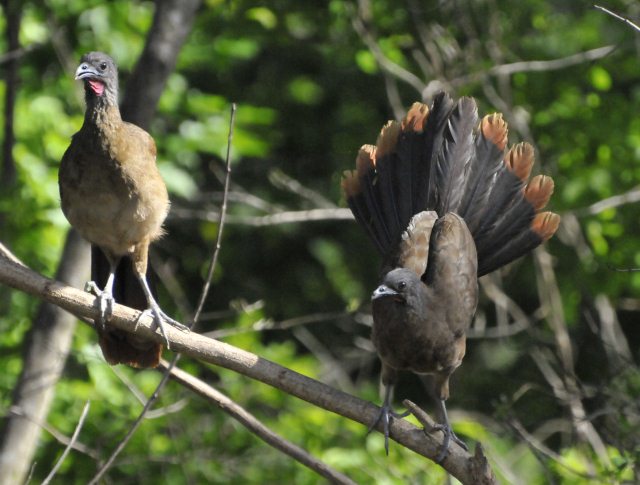 Chachalaca
male strutting his stuff to an uninterested female waiting to be
fed
 After the day at Canoe Bay, our local
beach, we arrived at three forty five on the Grafton Estate - having read that
many motmots arrive for set feeding times of eight in the morning and
four in the afternoon. Off up a short track we found an abandoned restaurant
with a feeding terrace in poor shape. Having waited a while Jump decided to fill the feeders with water for the birds
to be getting on with.
 Bananaquits
not impressed
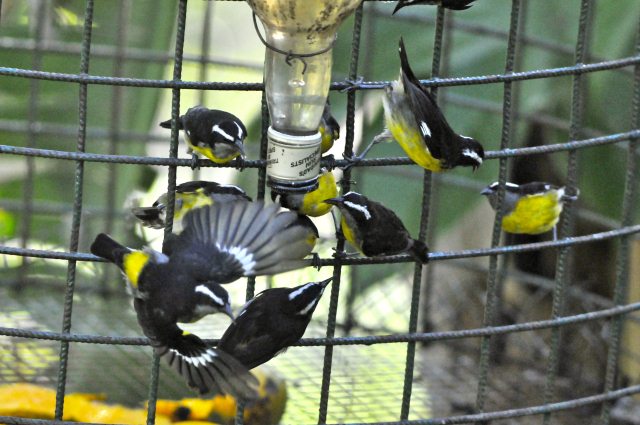 At about twenty past four a local man
appeared at slow speed with his faithful hound at an even slower speed who
told us he had been coming twice a day for sixteen years to fill the feeders with sugar water, laying out cheese for the motmots
and occasionally caring for folk who rent the house nearby. Grafton used to be a
plantation in its heyday and then a thriving restaurant long closed. The owners
live abroad and it is clear maintenance sadly is not a priority.
 As soon as the feeders
were filled the bananaquits were at it
 Motmots are a family of birds in the near
passerine order Coraciiform, which include kingfishers, bee-eaters and rollers, they are restricted to woodland or forest in the Neotropics, with the largest diversity in Middle
America. They have colourful plumage and a relatively heavy bill. All except the Tody Motmot have long
tails that in some species has a distinctive racket-like tip. Motmots eat small prey such as insects, lizards and will also take
fruit. In Costa
Rica, motmots have been observed feeding on poison
dart frogs. Like most of the Coraciiformes, motmots nest in tunnels in banks,
laying about four white eggs. The eggs hatch after about twenty days, the young
leave the nest aged four weeks. Both parents care for the young. Some species
form large colonies of up to forty paired individuals. Motmots often move their tail back and forth in a wag-display that commonly draws attention to an otherwise hidden bird. Research indicates that motmots perform the wag-display when they detect predators (based on studies on Turquoise-browed Motmot) and that the display is likely to communicate that the motmot is aware of the predator and is prepared to escape. This form of deterrent signal provides a benefit to both the motmot and the predator, the display prevents the motmot wasting time and energy fleeing, and the predator avoids a pursuit that is unlikely to result in capture. There is also evidence that the male tail, which is slightly larger than the female tail, functions as a sexual signal. In several species of motmots, the barbs near the ends of the two longest tail feathers are weak and fall off during preening, leaving a length of bare shaft creating the racket shape tail. There are however also several species where the tail is "normal", the Tody, Blue-throated, Rufous-capped and the Amazonian populations of the Rufous and Broad-billed Motmots 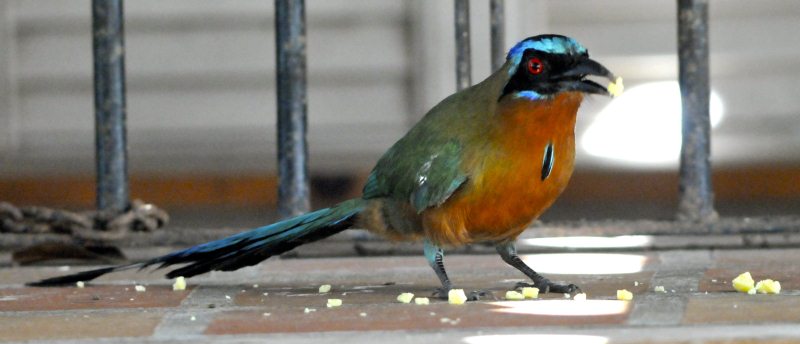 Motmot on the
cheese
 A Chachalaca trying his
luck
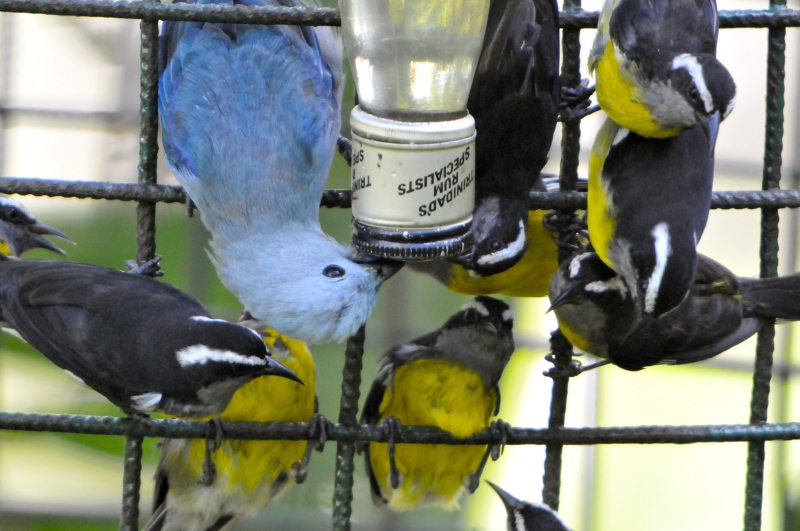 A Blue Tanager joins the
party
 A Rufous-vented
Hummingbird and Buff Tanager join in
 Bonaparte's or
Red-crowned Woodpecker
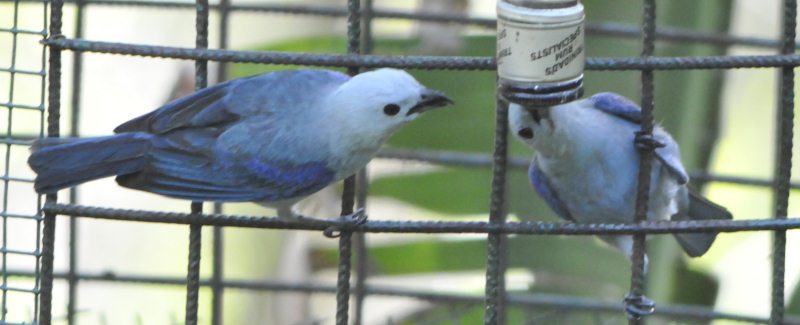 A pair of Blue-gray or Blue Tanager
 Blue-crowned
Motmot in all his glory, grown up because he has his chest
streak
ALL IN ALL A GREAT VISIT AFTER
SUCH A SHAKY START
|